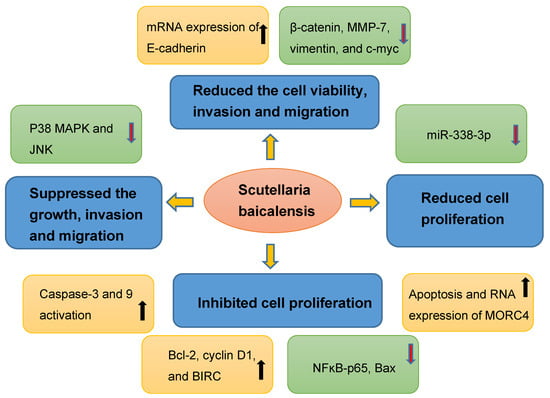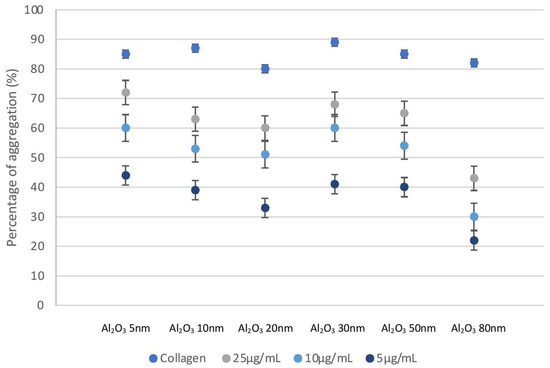Modern Molecular Informatics in Medical and Pharmacological Research
Share This Topical Collection
Editors
 Prof. Dr. Alicja Nowaczyk
Prof. Dr. Alicja Nowaczyk
 Prof. Dr. Alicja Nowaczyk
Prof. Dr. Alicja Nowaczyk
E-Mail
Website
Collection Editor
Department of Organic Chemistry, Faculty of Pharmacy, Collegium Medicum in Bydgoszcz, Nicolaus Copernicus University, 2 dr. A. Jurasza St., 85-094 Bydgoszcz, Poland
Interests: organic and medicinal chemistry; computational chemistry and molecular modeling of GAT, MAT, VGIC; predictive modelling of detailed mechanisms of action and pharmacological effec-tiveness of biologically active compounds and chemical reaction pathways; neuropharmacology; cardiovascular; safety pharmacology
Special Issues, Collections and Topics in MDPI journals
 Dr. Łukasz Fijałkowski
Dr. Łukasz Fijałkowski
 Dr. Łukasz Fijałkowski
Dr. Łukasz Fijałkowski
E-Mail
Website
Collection Editor
Department of Organic Chemistry, Faculty of Pharmacy, Collegium Medicum in Bydgoszcz, Nicolaus Copernicus University, 2 Dr. A. Jurasza St., 85-094 Bydgoszcz, Poland
Interests: pharmaceutical and medical sciences; drug development; chemistry/biology computational methods–in particular molecular docking, mechanisms of action of active compounds in the central nervous system and circulatory system; pharmaceutical care in community pharmacies for various groups of patients
Topical Collection Information
Dear Colleagues,
Undeniably, new inventions in the field of molecular informatics are constantly revolutionizing medical care and the patient's treatment process. It results directly from the fact that an increasing number of issues related to modern therapies are realized with the significant support of various computer algorithms. A modern approach to drug design includes molecular/cellular factors such as inflow/outflow transporters to the plasma membrane and the expression and distribution of cellular proteins. Furthermore, modern medical therapies are increasingly based on molecular biology explaining how different molecules interact in a living organism to perform complex life functions in a healthy or diseased organism. Similarly, various analytical techniques are applied to diagnosis and imaging based on techniques rooted in the field of molecular informatics.
Considering the above facts, the presented topical collection entitled "Modern molecular informatics in medical and pharmacological research" invites specialists from various areas of knowledge to present a variety of molecular informatics tools adapted to the implementation of specific tasks related to health protection. It will include a selection of scientific articles and reviews on various aspects of molecular informatics in medical and pharmacological research.
Prof. Dr. Alicja Nowaczyk
Dr. Łukasz Fijałkowski
Collection Editors
Manuscript Submission Information
Manuscripts should be submitted online at www.mdpi.com by registering and logging in to this website. Once you are registered, click here to go to the submission form. Manuscripts can be submitted until the deadline. All submissions that pass pre-check are peer-reviewed. Accepted papers will be published continuously in the journal (as soon as accepted) and will be listed together on the collection website. Research articles, review articles as well as short communications are invited. For planned papers, a title and short abstract (about 100 words) can be sent to the Editorial Office for announcement on this website.
Submitted manuscripts should not have been published previously, nor be under consideration for publication elsewhere (except conference proceedings papers). All manuscripts are thoroughly refereed through a single-blind peer-review process. A guide for authors and other relevant information for submission of manuscripts is available on the Instructions for Authors page. International Journal of Molecular Sciences is an international peer-reviewed open access semimonthly journal published by MDPI.
Please visit the Instructions for Authors page before submitting a manuscript.
There is an Article Processing Charge (APC) for publication in this
open access journal. For details about the APC please see here.
Submitted papers should be well formatted and use good English. Authors may use MDPI's
English editing service prior to publication or during author revisions.
Keywords
- molecular informatics in medicine and pharmacy
- molecular informatics in translational, pre- and clinical studies
- structural analysis, molecular modeling and safety pharmacology
- ligand-based drug design
- drug design on the basis of the concept of target, anti-target and counter-target
- computational methods in biology and chemistry
- artificial intelligence methods
Published Papers (3 papers)
2023
Open AccessArticle
Identification of New GSK3β Inhibitors through a Consensus Machine Learning-Based Virtual Screening
by
Salvatore Galati, Miriana Di Stefano, Simone Bertini, Carlotta Granchi, Antonio Giordano, Francesca Gado, Marco Macchia, Tiziano Tuccinardi and Giulio Poli
Cited by 1 | Viewed by 1073
Abstract
Glycogen synthase kinase-3 beta (GSK3β) is a serine/threonine kinase that plays key roles in glycogen metabolism, Wnt/β-catenin signaling cascade, synaptic modulation, and multiple autophagy-related signaling pathways. GSK3β is an attractive target for drug discovery since its aberrant activity is involved in the development
[...] Read more.
Glycogen synthase kinase-3 beta (GSK3β) is a serine/threonine kinase that plays key roles in glycogen metabolism, Wnt/β-catenin signaling cascade, synaptic modulation, and multiple autophagy-related signaling pathways. GSK3β is an attractive target for drug discovery since its aberrant activity is involved in the development of neurodegenerative diseases such as Alzheimer’s and Parkinson’s disease. In the present study, multiple machine learning models aimed at identifying novel GSK3β inhibitors were developed and evaluated for their predictive reliability. The most powerful models were combined in a consensus approach, which was used to screen about 2 million commercial compounds. Our consensus machine learning-based virtual screening led to the identification of compounds
G1 and
G4, which showed inhibitory activity against GSK3β in the low-micromolar and sub-micromolar range, respectively. These results demonstrated the reliability of our virtual screening approach. Moreover, docking and molecular dynamics simulation studies were employed for predicting reliable binding modes for
G1 and
G4, which represent two valuable starting points for future hit-to-lead and lead optimization studies.
Full article
►▼
Show Figures
Open AccessArticle
Unraveling the Role of Scutellaria baicalensis for the Treatment of Breast Cancer Using Network Pharmacology, Molecular Docking, and Molecular Dynamics Simulation
by
Yanqi Jiao, Chengcheng Shi and Yao Sun
Cited by 5 | Viewed by 2924
Abstract
Scutellaria baicalensis is often used to treat breast cancer, but the molecular mechanism behind the action is unclear. In this study, network pharmacology, molecular docking, and molecular dynamics simulation are combined to reveal the most active compound in
Scutellaria baicalensis and to explore
[...] Read more.
Scutellaria baicalensis is often used to treat breast cancer, but the molecular mechanism behind the action is unclear. In this study, network pharmacology, molecular docking, and molecular dynamics simulation are combined to reveal the most active compound in
Scutellaria baicalensis and to explore the interaction between the compound molecule and the target protein in the treatment of breast cancer. In total, 25 active compounds and 91 targets were screened out, mainly enriched in lipids in atherosclerosis, the AGE–RAGE signal pathway of diabetes complications, human cytomegalovirus infection, Kaposi-sarcoma-associated herpesvirus infection, the IL-17 signaling pathway, small-cell lung cancer, measles, proteoglycans in cancer, human immunodeficiency virus 1 infection, and hepatitis B. Molecular docking shows that the two most active compounds, i.e., stigmasterol and coptisine, could bind well to the target AKT1. According to the MD simulations, the coptisine–AKT1 complex shows higher conformational stability and lower interaction energy than the stigmasterol–AKT1 complex. On the one hand, our study demonstrates that Scutellaria baicalensis has the characteristics of multicomponent and multitarget synergistic effects in the treatment of breast cancer. On the other hand, we suggest that the best effective compound is coptisine targeting AKT1, which can provide a theoretical basis for the further study of the drug-like active compounds and offer molecular mechanisms behind their roles in the treatment of breast cancer.
Full article
►▼
Show Figures
Open AccessArticle
Aluminum Nanoparticles Affect Human Platelet Function In Vitro
by
Dominik Taterra, Bendik Skinningsrud, Sigurd Lauritzen, Przemysław A. Pękala, Dawid Szwedowski, Iwona M. Tomaszewska and Krzysztof A. Tomaszewski
Cited by 1 | Viewed by 1638
Abstract
Endoprostheses are prone to tribological wear and biological processes that lead to the release of particles, including aluminum nanoparticles (Al NPs). Those particles can diffuse into circulation. However, the toxic effects of NPs on platelets have not been comprehensively analyzed. The aim of
[...] Read more.
Endoprostheses are prone to tribological wear and biological processes that lead to the release of particles, including aluminum nanoparticles (Al NPs). Those particles can diffuse into circulation. However, the toxic effects of NPs on platelets have not been comprehensively analyzed. The aim of our work was to investigate the impact of Al NPs on human platelet function using a novel quartz crystal microbalance with dissipation (QCM-D) methodology. Moreover, a suite of assays, including light transmission aggregometry, flow cytometry, optical microscopy and transmission electron microscopy, were utilized. All Al NPs caused a significant increase in dissipation (D) and frequency (F), indicating platelet aggregation even at the lowest tested concentration (0.5 µg/mL), except for the largest (80 nm) Al NPs. A size-dependent effect on platelet aggregation was observed for the 5–20 nm NPs and the 30–50 nm NPs, with the larger Al NPs causing smaller increases in D and F; however, this was not observed for the 20–30 nm NPs. In conclusion, our study showed that small (5–50 nm) Al NPs caused platelet aggregation, and larger (80 nm) caused a bridging–penetrating effect in entering platelets, resulting in the formation of heterologous platelet–Al NPs structures. Therefore, physicians should consider monitoring NP serum levels and platelet activation indices in patients with orthopedic implants.
Full article
►▼
Show Figures










